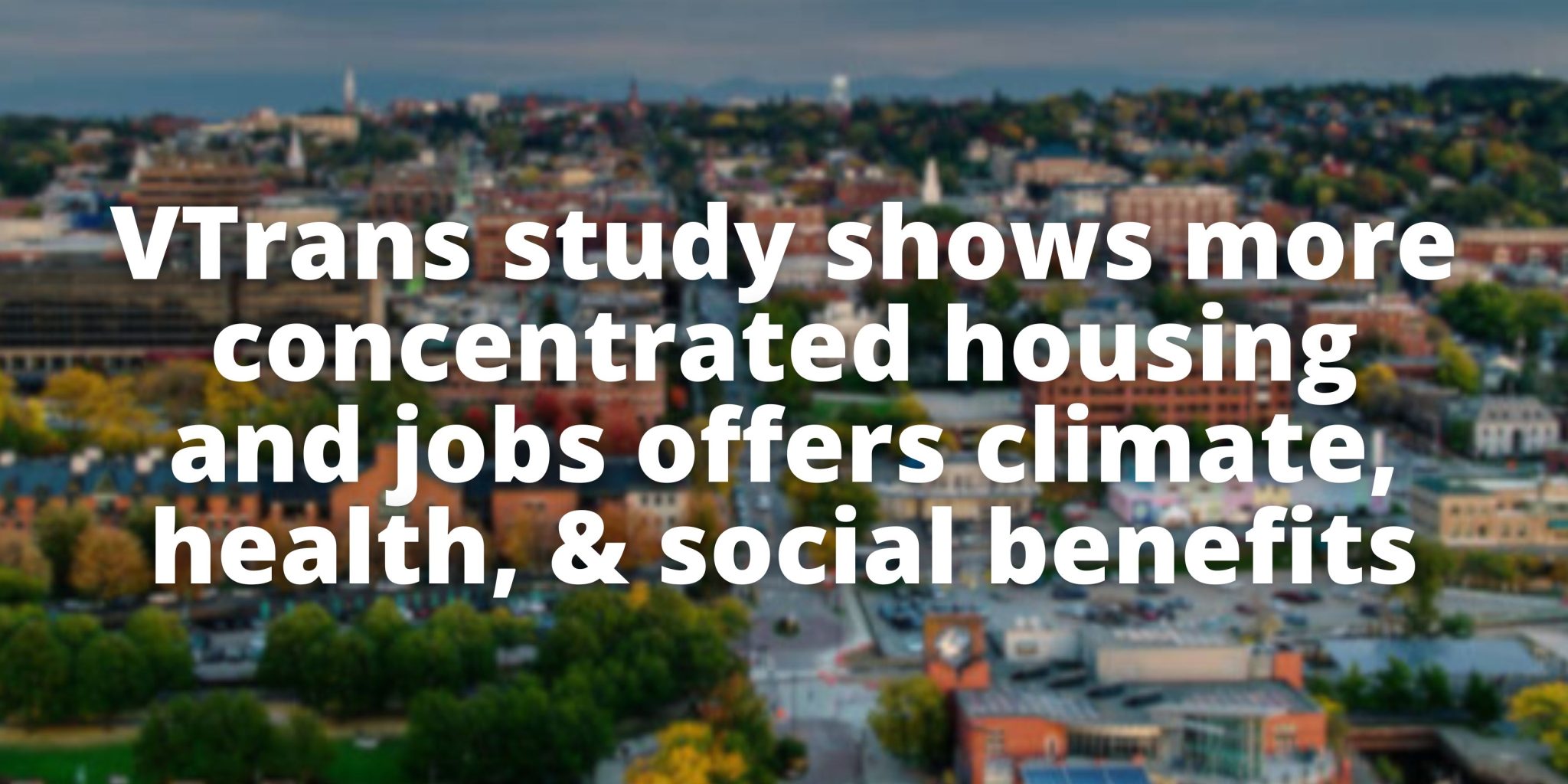Transportation makes up the second-largest share* of greenhouse gas emissions (GHG) in Vermont. The Climate Action Plan identifies the reduction of “vehicle miles traveled” (VMT) as a key pathway to achieving the targets set out by the Global Warming Solutions Act and recognizes the need to quantify the potential for smart growth strategies to reduce VMT and GHG (along with co-benefits related to health, safety, and cost-savings).
The Vermont Agency of Transportation recently completed a study that did just that, with the support of expertise from RSG and VHB consulting firms and a Technical Advisory Committee that included VNRC staff.
*Before the COVID-19 pandemic, transportation was the largest share of greenhouse gas emissions. With driving rebounding to pre-pandemic levels and public transit ridership going down, we expect transportation to take the #1 spot again.
The study found that by concentrating housing and jobs in community centers across the state, Vermont will each year:
- Meet over 15% of the annual GHG reduction required to meet Vermont’s 2050 target
- Avoid 1 traffic death
- Avoid 31 traffic injuries
- Reduce physical inactivity deaths by nearly 4 lives
- Reduce maintenance costs by >$1.5 million
- Avoid 364 additional road miles
Conversely, by allowing growth to occur in a dispersed settlement pattern, Vermont will each year:
- Increase GHG emissions by >17,000 metric tons
- Increase traffic deaths by 1.5
- Increase traffic injuries by 52
- Increase physical activity mortality by nearly 3 lives
- Cost an additional $2 million in maintenance costs
- Require over 500 additional road miles.
This study provides concrete data to quantify the benefits of compact, mixed-use development, one of our long-time policy priorities. Read about our work to foster sustainable communities across Vermont here.
Resources:




